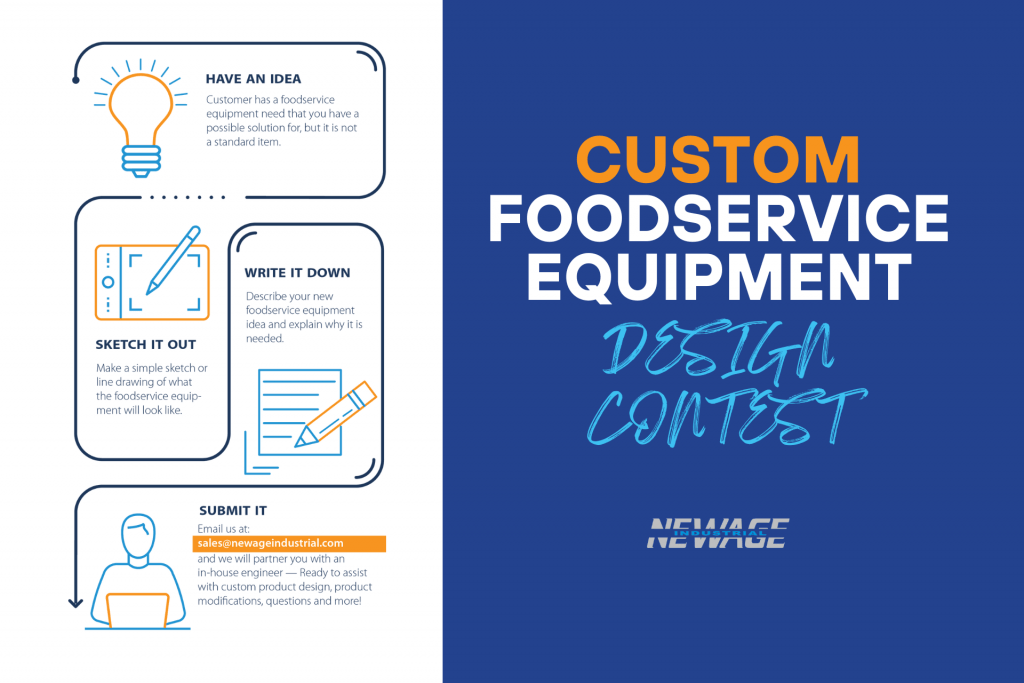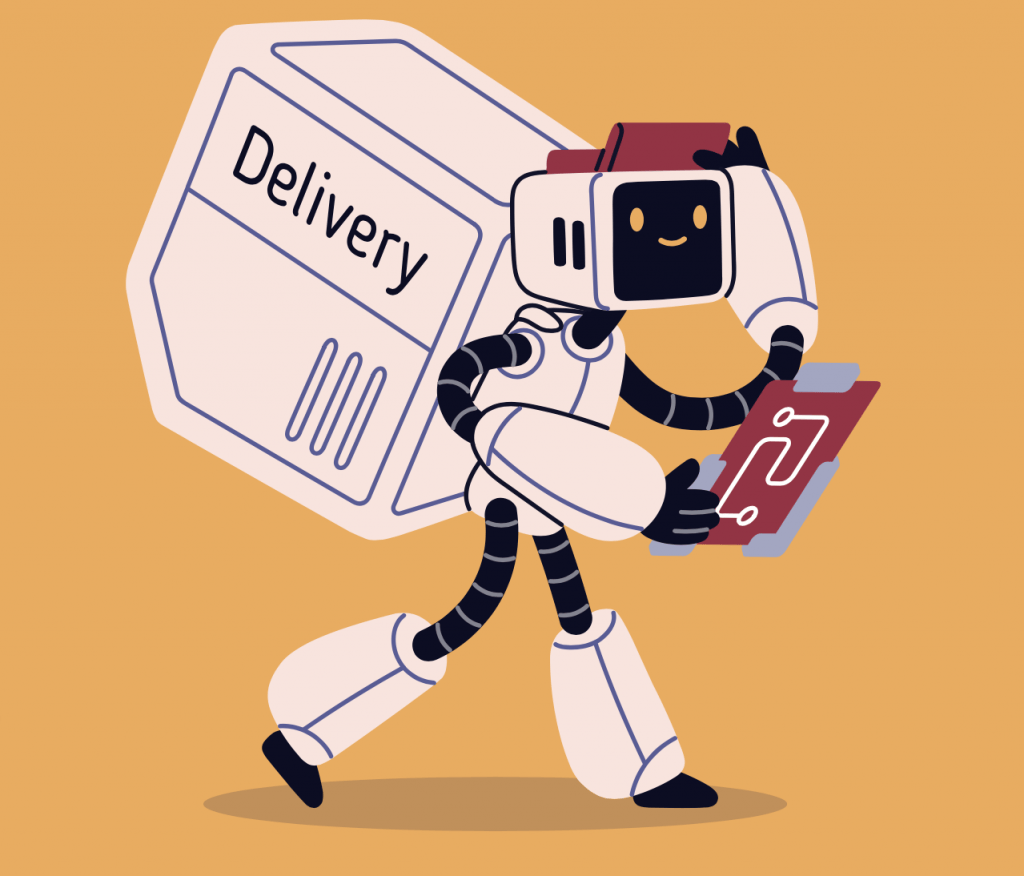
Leading-edge technological innovation came to the fore during the pandemic; helping businesses to pivot their offering and keep some income coming in. This completes the Foodservice Consultant special innovation report on new technology making its mark on the industry.
Foodservice took a tremendous hit during the Covid-19 pandemic. Now, thanks to the roll out of successful vaccine programs most of the world is getting ready to reopen for business. Operators have had to adapted to new ways of running their businesses and technology has played its part.
We have already looked at the role of smart equipment and increased connectivity in post-pandemic kitchens, together with ensuring optimum customer care with the facility for touchless ordering and paying.
The uptake of robots and AI has also been accelerated during this time that has changed foodservice forever.
Rise of the robots
In the age of ghost kitchens, designed solely to prepare food for delivery and requiring no customer interaction at these sites, it is no surprise that operators are already looking at the next step in automation. Soon they could be staffed by smart equipment and robots.
“We already make a digital twin of a kitchen to see how the equipment will fit together as an operating system,” says Rick Caron, chief innovation officer at equipment manufacturer Welbilt. “The idea of a kitchen as a shared asset working with a delivery service will become more common.”
The move of Uber’s former CEO to CloudKitchens suggests a stronger link between ghost kitchens and delivery services.
“We are seeing robotic kitchens that combine smart equipment with a robotic arm, combining automated frying and grilling with robotic delivery,” says Jay Bandy of Goliath Consulting in Georgia, US. “There is a consistent cooking process and the equipment is easy to program, so there is a synergy between smart cooking equipment and robotics.”
Robots, however, are not only for ghost kitchens. Spyce in Boston, for example, has a fully automated cooking line. Kitchen staff put fresh ingredients into robotic induction woks that handle the cooking process. The founders – MIT students and self-confessed robotics-obsessed engineers – wanted to bring precision and consistency to tasty and affordable fast-casual food.
Bandy is already working with a robotic pizza company opening up in the US. The pizzas are assembled off site and loaded into a kiosk. Once a customer has ordered using an app, the order is robotically delivered three minutes later through a slot.
“In this project, the automated robotic kiosks can be supplied once a day with products and customers can order either on-site or by phone,” he explains. “The kiosks can operate 24/7 and there are many potential applications in hospitals, universities, train stations and more.”
In essence, it is the reinvention of the automat food-vending system, which Bandy believes will proliferate in the next two years, partly because of the low cost of entry. Originally seen in Berlin in the late 1800s, automats appeared around the world after the Spanish Flu epidemic of 1918. Back then, people prepared food and coffee for customers to collect through the serving hatches. Now, robots do the prep.
“We have one client that has developed a robotic solution supplying an automat,” says Bandy. “We are also seeing some variations that have popped up in restaurants, such as lockers that can be opened with a code on a phone, just like an Amazon locker.”
The next step on the journey of automation is, no doubt, autonomous delivery. Amazon is already trialing the use of drones to deliver packages, so it won’t be long before takeaway orders are being brought to your door by a machine.
“Delivery robotics are more widespread in other countries, but will start to happen more in the US,” says Bandy. “There are, however, a lot of barriers. The machines are out in public and there are lots of unknowns in every delivery. It will take a lot of time to make it work effectively.”
The flipside of autonomous delivery is autonomous pick-ups. Fast-food giants, including McDonald’s and Burger King, have greatly increased the number of drive-thru lanes during the pandemic, including express lanes for advance orders made through an app. Couple that capacity with self-driving cars, and a new delivery model could be born.
“At its birth in 1986 in the UK, we saw the drive-through account for 15% of business, but now it is around 60-70%,” notes Caron. “With autonomous cars coming into the market, we could see them picking up food at drive-thrus in the not too distant future.”
Look me in the AI
Autonomous cars, automated servers at drive-thrus or the order assistants used by the likes of Chipotle and Domino’s Pizza are all dependent on one technology – artificial intelligence (AI). Seemingly intelligent systems – in fact complex algorithms coupled with the ability to recognize inputs, often voice commands – are now commonplace.
“AI is already in more restaurants than people realize,” says Bandy. “AI is taking phone orders and now there are AI order-takers in drive-thrus, which has a big impact on a part of the industry that is hardest to staff. In 2021, we will see a lot more US restaurants incorporating AI into their operations.”
AI is already ubiquitous in taking restaurant call-in orders in pizza and fast casual chains. Drive-thru technology developer Hi Auto is currently testing an AI attendant at Lee’s Famous Recipe in Dayton, Ohio, and voice technology company RedShift has developed an AI ordering app that links directly to the restaurant POS.
Burger King is also getting in on the act, with its Deep Flame AI system for its drive-throughs, which leverages AI’s ever-improving understanding of natural language, including accents and linguistic nuances. It not only takes orders, but also upsells by making suggestions to customers, such as an iced coffee on a hot day.
“AI will make it possible to offer consumers an increasingly personalized experience, and maximize their satisfaction and loyalty,” says Patrick Hooykaas, managing director at restaurant booking app developer TheFork.co.uk. “AI will help to develop stronger guest relationships and deliver the types of exceptional on-premise experiences that turn first-time guests into repeat visitors.”
The applications of AI go well beyond ordering. For instance, Spyce’s robotic cooking line is monitored by an AI system that ensures that the food is prepared correctly and meets quality standards.
“AI is the next game-changer,” says Caron. “So far, we have only scratched the surface of what it can do. It enables advanced sensors and predictive maintenance algorithms, and we even have areas in the kitchen with cameras that can see the food arriving and start the oven with the relevant settings.”
Restaurants are getting smarter, more efficient, more consistent in their quality, while reducing their need for labor. Whether driven by Covid or not, the unstoppable influence of technology – both in the kitchen and beyond – is reshaping the industry for the post-pandemic world. Innovation, it seems, is the secret ingredient that will help the foodservice sector to prosper.
Jim Banks




